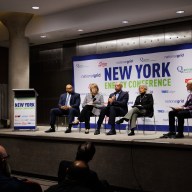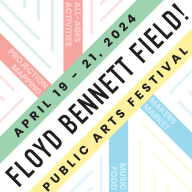By Debbie Cohen
The colors symbolize sacrificed blood, race and Mother Africa. During this holiday, people greet each other in Swahili, a widely spoken African language, saying, “Habari gani,” which means, “What's new?”Kwanzaa is derived from the phrase “matunda ya Kwanza,” which means “first fruits” in Swahili. It celebrates family, community and culture and is now a 40-year-old tradition celebrated throughout the world by millions of people. It was founded by Maulana Karenga, a professor of Black Studies at California State University, Long Beach. According to Donna Libert-Young, a first grade teacher at PS 176, who also hosted the library event, explained that Kwanzaa unites people to work collectively for a common goal in their community. “Togetherness, survival of communities, and honoring our African heritage is what Kwanzaa represents,” Libert-Young said. “Kwanzaa is based on seven principals (nguzo saba) and seven symbols.”The seven principals include umoja Ð unity in the family, community, nation and race. The next four are: kujichagulia, self-determination; ujima, collective work and responsibility; ujamaa, cooperative economics, and nia, purpose. The last two are kuumba, creativity, and one of the most important is imani, faith.Libert-Young explained that a table is set with a beautiful African colored tablecloth for preparation for the seven symbols. The symbols are mazao (crops) represented by fresh fruits and vegetables; mkeka (placemat) as all the symbols are placed on the mat; kanara (candle holder) with seven candles. The mishumaa saba (seven candles) include a black candle in the center, with three red candles on the left and three green candles on the right; vibunzi (ears of corn), represents the number of the children in the home; kikombre cha umoja (communal unity cup) and zawadi (the gifts). Gifts are given throughout the Kwanzaa celebration but mainly to children. They usually include a book and a heritage symbol. The book emphasizes African values and traditions of learning. The heritage symbol reaffirms and reinforces the African commitment to tradition and history by bringing good into the world. Linda Humes from Yaffa Arts in Manhattan and percussionist Sanga of the Valley performed a storytelling musical performance at the library with creative stories, rap songs, drumbeats and a limbo contest for the children. Sanga said that the drum calls attention to the people and it is the voice of the ancestors. “We are a global people all over the world,” Humes said, as she placed a handmade globe hat with green, flowing streamers upon Malika, an 11-year-old volunteer dancer who performed during Humes' presentation. “The Black Family Pledge,” written by Maya Angelou, was handed out to all attendees at the Kwanzaa event. Part of the pledge reads, “Therefore we pledge to bind ourselves to one another, to embrace our lowliest, to keep company with our loneliest, to educate our illiterate, to feed our starving, to clothe our ragged, to do all good things, knowing that we are more than keepers of our brothers and sisters. We are our brothers and sisters.”



























